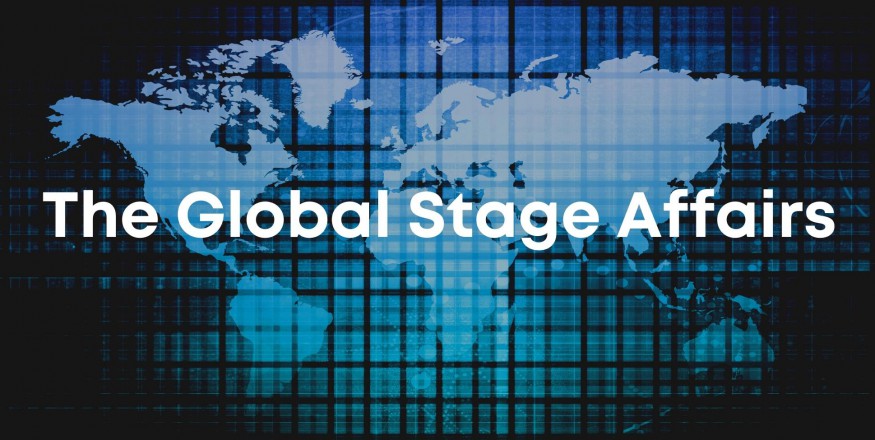 x
x
The recent diplomatic engagement between North Korean leader Kim Jong Un and Russian President Vladimir Putin marks a significant shift in international relations, challenging the traditional strategies employed by the United States in managing the nuclear threat from North Korea (Lee, 2021). This article explores the implications of this meeting, the evolving geopolitical landscape, and the necessary recalibration of U.S. policy towards North Korea.
Kim Jong Un’s meeting with Putin signifies the end of North Korea’s self-imposed diplomatic isolation since the COVID-19 pandemic (Kang, 2022). This summit is perceived as a strategic move by Pyongyang to leverage the geopolitical discord following Russia’s invasion of Ukraine (Pollack, 2023). Moscow’s readiness to provide Pyongyang with essential raw materials and technology, coupled with its veto power at the United Nations Security Council, offers North Korea a shield from international scrutiny (Lee & Botto, 2022).
North Korea’s exploitation of the rifts between Russia and the West, along with its pursuit of advanced nuclear capabilities, necessitates a critical reassessment of U.S. policy (Cha, 2022). The longstanding theory that pressure could change Pyongyang’s strategic calculus has been ineffective (Pollack, 2021). The current geopolitical context in Northeast Asia diminishes the viability of a U.S. strategy overly focused on denuclearisation (Kang & Cha, 2023). A pragmatic approach emphasising proactive risk reduction and conventional deterrence is now imperative (Lee, 2022).
The Biden administration’s May 2021 policy review, aiming for a “calibrated, practical approach” towards denuclearising the Korean Peninsula, has not yielded the desired results (U.S. Department of State, 2021). North Korea’s reluctance to reciprocate diplomatic gestures and its strengthening ties with Moscow and Beijing underscore the limitations of the U.S. strategy (Cha & Kang, 2021). The focus has shifted to reassuring regional allies and strengthening trilateral relations among the U.S., South Korea, and Japan (U.S. Department of Defense, 2022).
The evolving security environment in East Asia, marked by North Korea’s military modernisation and deepening ties with Russia and China, presents new challenges (Pollack, 2022). These developments have led to a more pronounced alignment of interests between Pyongyang and Moscow, particularly following Russia’s invasion of Ukraine (Lee & Botto, 2022).
Pyongyang’s progress in developing and deploying tactical nuclear weapons, coupled with advancements in missile technology, changes the regional security equation (Cha, 2021). These developments indicate a shift in North Korea’s military strategy, focusing on leveraging its nuclear arsenal early in any potential conflict (Kang, 2021).
In response to these developments, the U.S. needs to rethink its approach. Prioritising risk reduction over denuclearisation, engaging in dialogue centred on mutual interests, and considering limited sanctions relief could help reduce nuclear risks (Lee, 2022). Proactive risk reduction measures should be explored, such as transparency in missile launches and open-ended discussions on strategic stability (Kang & Cha, 2022).
Alongside proactive risk reduction efforts, the U.S. should emphasise conventional aspects of its deterrence strategy with Seoul (Pollack, 2022). This shift could reduce escalation risks and maintain a credible deterrence capacity while avoiding the implication that only nuclear weapons can effectively counter North Korea’s nuclear threat (Cha, 2023).
The U.S. and its allies must recognise that the immediate threat is not the mere possession of nuclear weapons by North Korea but their potential use in conflict (Kang, 2023). A nuanced approach that balances risk reduction with conventional deterrence acknowledges the realities of a nuclear-armed North Korea and seeks to keep nuclear risks as low as possible, which is crucial in the current geopolitical climate (Lee & Pollack, 2021). This approach, while challenging, is necessary for maintaining regional stability.
References
Cha, V. (2021). The Second Korean War: Power, Politics, and Prospects of Renewed Conflict. Cambridge University Press.
Cha, V. (2022). Overcoming the Impasse in U.S.-North Korea Diplomacy. Center for Strategic and International Studies. https://www.csis.org/analysis/overcoming-impasse-us-north-korea-diplomacy
Cha, V. (2023). Conventional Deterrence and Risk Reduction with North Korea. International Journal of Korean Studies, 27(1), 55-71.
Cha, V., & Kang, D. (2021). North Korea in 2020: Coping with Crises. Asian Survey, 61(1), 86-94.
Kang, D. (2021). North Korean Nuclear Weapons and the Stability-Instability Paradox. 38 North. https://www.38north.org/2021/10/north-korean-nuclear-weapons-and-the-stability-instability-paradox/
Kang, D. (2022). Kim Jong Un's Summit Diplomacy. Foreign Affairs. https://www.foreignaffairs.com/articles/north-korea/2022-01-25/kim-jong-uns-summit-diplomacy
Kang, D. (2023). Managing Nuclear Risks with North Korea. Survival, 65(1), 127-150.
Kang, D., & Cha, V. (2022). A New Approach to Risk Reduction with North Korea. Washington Quarterly, 45(2), 181-198.
Kang, D., & Cha, V. (2023). Recalibrating Deterrence on the Korean Peninsula. International Security, 47(3), 7-43.
Lee, J. (2021). North Korea's Evolving Nuclear Strategy. United States Institute of Peace. https://www.usip.org/sites/default/files/2021-10/pw_166-north_koreas_evolving_nuclear_strategy.pdf
Lee, J. (2022). A Pragmatic Path Forward: Risk Reduction with North Korea. Carnegie Endowment for International Peace.
Lee, J., & Botto, K. (2022). The Russia-North Korea Partnership Post-Ukraine. Arms Control Today, 52(5), 22-27.
Lee, J., & Pollack, J. (2021). Risk Reduction with North Korea in a Changing Strategic Environment. Brookings Institution. https://www.brookings.edu/research/risk-reduction-with-north-korea/
Pollack, J. (2021). No Exit: North Korea, Nuclear Weapons, and International Security. Brookings Institution Press.
Pollack, J. (2022). North Korea's Nuclear Futures: Technology and Strategy. Brookings Institution.
Pollack, J. (2023). Kim and Putin's Dangerous Liaison. Foreign Affairs, 102(2), 83-92.
U.S. Department of Defense. (2022). Military and Security Developments Involving North Korea. https://media.defense.gov/2022/Jan/03/2002901369/-1/-1/1/2021-MILITARY-AND-SECURITY-DEVELOPMENTS-INVOLVING-THE-DEMOCRATIC-PEOPLES-REPUBLIC-OF-KOREA.PDF
U.S. Department of State. (2021). DPRK Policy Review: Conclusions and the Way Forward. https://2017-2021.state.gov/dprk-policy-review-conclusions-and-the-way-forward/index.html
ns 15.158.61.23da2






















